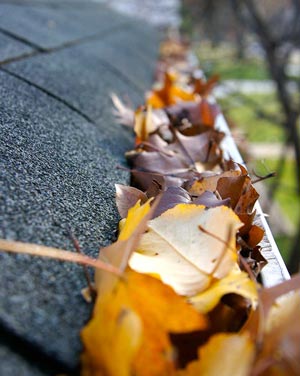Gutters are necessary if you want to protect your landscaping and guide runoff away from your home’s foundation. However, the maintenance required to keep gutters in good shape can become tiresome if you’re continually cleaning leaves out of the way of the water. In an effort to reduce the amount of work you have to do, you might want to look at adding a gutter screen.
However, gutter screens require their own care, and the type of gutter screen you choose can make a big difference because different seasons and trees can bring with them some specific problems. Here’s what you need to know about using gutter screens properly.
Finding the Right Type
Screens have three major variations: screens with mesh, screens with punched holes and screens with a long slit down the length of each screen. Which style you choose often depends on what trees you have and the debris you have to deal with. For example, if you have a lot of pines nearby, the needles can easily get caught in the larger holes in some screens, so you’d want a more mesh-like screen.
But if you only have to worry about larger leaves falling down on windy days, the other two types of screens would be fine. Be aware that very small debris, like seeds and tiny bits of broken leaves, could get through most types of screens. Still, that’s a lot better than not having any screen and having your gutter fill up with all of the debris.
Planning the Slope
The screen you use needs to be pitched at the correct angle to allow leaves to fall off more easily. The pitch should match the slope of the roof, and the screen should not leave any large spaces between the roof and the gutter. You don’t want leaves getting wedged in there and creating a mess.
Troubleshooting the Screens
Gutter screens do work for the most part. If you find so much debris in your gutters that the screens seem worthless, you need to find a different type of screen. It’s not uncommon for small bits and pieces to still get through, as was mentioned earlier. However, with the right screen, you should not have nearly as much work to do to maintain the gutters.
Do be aware that leaves can get stuck on top of the screen sometimes. Especially if the leaves are wet and very flimsy, they might not slide off as expected. After storms, briefly check the screens and wipe off anything that was stuck there. Don’t let those leaves dry completely, though: they could stick to the screen and become very hard to remove.
Also check the screens after serious hailstorms. A little bit of small hail might not be a big deal, but moderate and large hail could dent some screens. Those dents could trap more leaves and debris, leading to serious problems with icicles in winter or with overflowing gutters during the next spring.
Learning Proper Care
Inspect the screens regularly even if there haven’t been storms. Look for signs that wild animals have tried to mess with the screens, and occasionally take the screens off to clean out those smaller pieces. It’s also good to have the screens cleaned professionally so that you know that they are clear.
If you want to get more information on using or caring for gutter screens and guards, contact D & B Continuous Guttering, Siding & Soffits LLC. With our wide selection of reputable products, our staff can help you find the right screen to prevent your gutters from clogging up and overflowing.

